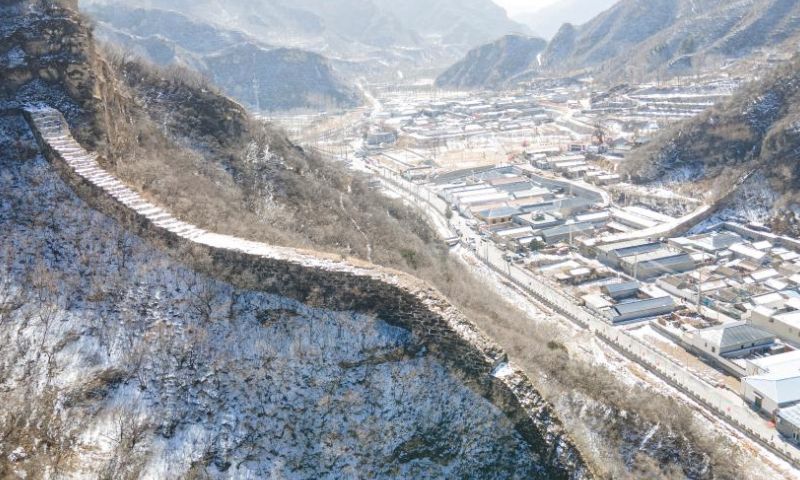Recently, the 2022-2023 Significant Archaeological Discoveries Selection Conference was held in Hefei, East China's Anhui Province. Among the honored sites stands the Ming Dynasty (1368-1644) imperial city ruins in Fengyang county, Chuzhou.

An aerial drone photo taken on Feb. 25, 2024 shows a city wall section built in 1520 at Changyucheng Village in Changping Distric, Beijing, capital of China. Built in the Ming Dynasty (1368-1644), Changyucheng is an ancient Chinese village rich in historical and cultural resources. (Xinhua/Chen Zhonghao)
Constructed by the founding emperor of the Ming Dynasty, Zhu Yuanzhang, Mingzhongdu (Lit: the central capital of the Ming Dynasty) was situated in the heart of Anhui Province and once served as the imperial capital.
Spanning an area of 50 square kilometers, the site encompasses a complex of fortifications, palaces, temples, governmental offices, and military facilities, as well as an intricate network of roads and water systems.
The excavation efforts conducted between 2022 and 2023 primarily focused on the former imperial palace complex of Mingzhongdu with the goal of systematically revealing the architectural layout, structures, and construction methods of the palace.
Following the discovery of the main hall in the former imperial area, archaeologists further explored the western side of the H-shaped main hall, unearthing the foundation of a building that is believed to have been adjacent to the main hall.
Additionally, within the southwestern corner of the former imperial courtyard, structures resembling pavilions and gates, along with corridors, were cleared. They were found to have all been situated on brick bases with an inner rammed earth layer.
Archaeologists also uncovered a potential gate on the south side of a corner building, providing crucial clues for determining the specific route of the transverse road between the East and West gates within the imperial city.
Over the span of two years, researchers revealed several facilities related to the Inner Golden Water Bridge within Mingzhongdu, including the western bridge, a corridor spanning the Inner Golden Water River to the west of the city's Central Axis, and the southeastern outlet of the river passing through the southern city wall of the palace.
He Yun'ao, a professor from Nanjing University, said that the archaeological excavations at the imperial palace of Mingzhongdu hold significant value for studying the institutional evolution of the central architectural zones within imperial cities in China since the Tang Dynasty (618-907).
Recent archaeological findings at Mingzhongdu clearly reveal the architectural layout of the palace area's western side during the Yuan Dynasty (1279-1368). The discovery of the Inner Golden Water Bridge and its association with the palace's important functional areas go beyond just being urban water supply and drainage systems, He said, adding that this provides crucial clues for investigating the Inner Golden Water Bridge systems within imperial cities during the Song (960-1279) and Yuan dynasties.
Source: Global Times
https://www.globaltimes.cn/page/202403/1308630.shtml